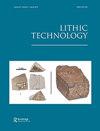The DISAPALE Project: A New Digital Repository of Lithic and Bone Artefacts
IF 1.2
3区 社会学
Q2 ANTHROPOLOGY
引用次数: 6
Abstract
ABSTRACT As for every aspect in our daily lives, in the past two decades a digital turn has stormed Archaeology. More specifically, in the field of Palaeolithic research, 3D recording methods are currently starting to become an established standard in the documentation, study and analysis of lithic artefacts. Once made available to public, the DISAPALE project will represent one of the largest 3D-models repository of lithic artefact: after introducing the project, its goals and main characteristics, the paper first contextualizes the specific nature of the blank material in relation to the 3D recording techniques, and then presents a significant example of the workflow that has been implemented during the DISAPALE project and a comparison between 3D models of three objects realized with two different methods, briefly discussing their relative pros and cons.DISAPALE项目:一个新的石器和骨制品数字资源库
在我们日常生活的方方面面,在过去的二十年里,数字化浪潮席卷了考古学。更具体地说,在旧石器时代研究领域,3D记录方法目前开始成为记录、研究和分析石器文物的既定标准。一旦向公众开放,DISAPALE项目将成为最大的3d模型存储库之一。在介绍了该项目及其目标和主要特点之后,本文首先将空白材料的具体性质与3D记录技术联系起来,然后介绍了DISAPALE项目中实施的工作流程的一个重要示例,并比较了用两种不同方法实现的三种物体的3D模型,简要讨论了它们的相对优缺点。
本文章由计算机程序翻译,如有差异,请以英文原文为准。
求助全文
约1分钟内获得全文
求助全文

 求助内容:
求助内容: 应助结果提醒方式:
应助结果提醒方式:


